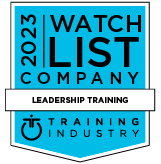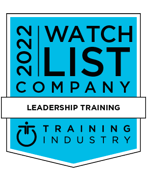The Power of Knowing Your People

Contents
Leadership is 10% work, 90% relationships.
We all want that big leadership promotion, but what do we do once we get it?
Employees Often Receive Promotions Due to Their Technical Skills, Not Their People Skills. This is What Gets Most Leaders in a Rut.
We all know or have had that one manager who can read and formulate any excel sheet you hand them, but completely lack the people skills needed to read their people.
The truth is the skills that got us the promotion aren't the skills that are going to help us keep it or grow into the next promotion.
To make any business successful, we must know our customers well. The same goes for leaders. To be a successful leader, you must know your people.
Great leaders are aware that any organization is just an entity and it is the people within the organization that bring it to life.
Human connection in the workplace makes a difference. It's the foundation for developing trust, goodwill, and a sense of belonging within any team.
So how do we go about getting to know and understand our people on a deeper level?
Here are a few tips toward deepening relationships with the people we serve.

It Begins with Self-Awareness.
Start with the end in mind and go from there.
What do you want to be known for in your leadership life? How would you want your people to describe you?
Next, take a look in the mirror and give yourself an honest assessment of your leadership skills.
Where are your strengths? Where are your weaknesses?
It's easy to be hyper-forgiving or overly critical of ourselves on any given day at any given moment.
It's difficult to see ourselves accurately.
This is where having a mentor, coach, accountability partner, and/or mentee in our lives serves us. They point out our blind spots and give us an honest reality check on our leadership successes and pitfalls.
Dedicating time to assess how we want to be in our leadership and what we want to accomplish through the relationships we develop with our people will help us communicate more effectively, confidently, and clearly in the long run.
Always Ask, Never Assume.
You may have heard the phrase, "When you assume, you make an ASS out of U and ME ." It's crude and annoyingly accurate.
How often have we misread or misunderstood an email from our leaders or our people, made an assumption, and spiraled in a time-wasting cycle of he-said, she-said?
Next time you begin to assume, pick up the phone and ask for clarification.
Try out the statement, "Do you mean…" and see where it takes you.
Next time you go to assign a new project to your team, explain the why, and give your people space to ask clarifying questions.
Even better, try having your people repeat back to you the what, why, and how of their new project.
Never assume your people are receiving the support and clarity they need from you to thrive. Always ask if they have what they need to succeed.
Seize the Small Opportunities to Connect.
It's in the small moments, gestures, and questions where true human-to-human connection lie.
These moments are sneaky and fleeting. We must be present, curious, and seize the daily opportunities to connect authentically with our people.
A simple question of "How are you doing? How do you need support right now?" can go a long way.
Establishing connections with our people that show how much we value, understand, and care about them isn't easy. Curiosity and a willingness to check-in are key.
In the words of Bill Nye, "Everyone you will ever meet knows something you don't."
The only way to unlock that knowledge is to be curious about your people and take advantage of those small opportunities to connect.

Check Bias at the Door and Listen.
Take a moment and consider the conversations where you've shifted from checking in with your people to debating or trying to persuade them to your way of thinking.
It's easy to get caught up in wanting to be right or feel accurately heard. What's more interesting is to develop the skill of listening to our people.
Check-ins are opportunities to hear out another person's perspective, not to debate or persuade.
If a person we lead shares something we don't understand or agree with, it's best to acknowledge their point of view and ask them to explain further.
Try out "Can you say more about …? I want to better understand your thoughts on this." or "I never thought about it that way. I appreciate you sharing with me.".
You may be pleasantly surprised by their response.
 Embrace Transparency.
Embrace Transparency.
Being transparent with our people is no easy task.
We don't want to defend our decisions, admit to our mistakes, confront difficult conversations, or confess to when we're unsure and don't have all the answers.
As leaders, we want to make our people feel secure and confident in our leadership. Sometimes we think keeping them in the dark will make this happen, but a lack of transparency breeds distrust and insecurity.
Implementing change in our team or department without stating our intent and purpose may be perceived as forced rather than understood and well supported.
Sharing the why behind any decision, action, and communication will create legitimacy, trust, and alignment from our people.
Transparency keeps us honest, accountable and shows that leaders are human.

While these tips will help guide the way, the journey in knowing our people is never-ending.
It is a continuous path that requires commitment, dedication, and a willingness to be curious and listen.
More and more people are tending to look to their work communities for validation, safety, fulfillment, and happiness.
It is the job of the leader to create this sense of belonging.
Leading people who feel valued, understood, and appreciated breeds tremendous benefits -- from higher engagement to stronger client retention to increased financial results.
There will always be a Sabotaging Sam, Complaining Cathy, and Passive-Aggressive Peter in just about every work environment.
Our ability to understand and get the most out of difficult personalities is what our leadership journey is all about.
Insights

Subscribe to Our Monthly Newsletter!
For managers and talent professionals who truly believe in putting people first, the CARE to Win blog is your gateway to the latest insights on human-centric leadership. Join us as we champion the people first movement.
Need some time apart? Are we emailing you too often? Just give us your feedback, and we promise we’ll respond. We really do care. And if it’s still too much, just unsubscribe. It’s cool.



